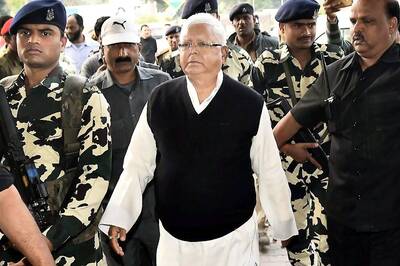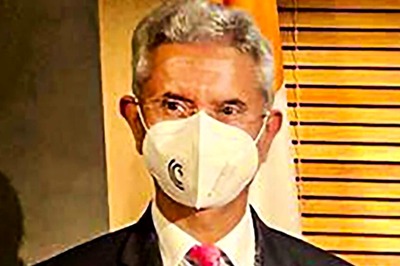
views
Coronary angioplasty is a medical procedure to widen narrowed or blocked coronary arteries, restoring blood flow to the heart. A catheter with a balloon is inserted, inflated to open the artery, often with a stent placement to maintain the vessel’s patency. Precautions include post-procedure monitoring for bleeding, infection, or allergic reactions, adherence to prescribed medications, lifestyle modifications like a heart-healthy diet, regular exercise, and cessation of smoking to prevent further arterial issues. Regular follow-ups with healthcare professionals are crucial for optimal recovery.
Dr Ajit Menon, Senior Interventional Cardiologist, Sir HN Reliance Foundation Hospital, says, “Coronary angioplasty is a way of treating a blockage in a coronary artery by using a balloon and subsequently, if necessary, the use of stents to stop. The procedure per se only opens up an artery, which is blocked, but it does not take care of the entire atherosclerotic process, which is an ongoing process in a patient. The patient is susceptible to have atherosclerosis, which means buildup of cholesterol in the arteries of the heart and other areas of the body. This can continue to happen in spite of the angioplasty.”
Moreover, any angioplasty that is done, there is a 4-6% chance of a re-narrowing within the stented segment, and if there is no care taken as far as medications, lifestyle, diet, exercise, weight loss, alcohol moderation, avoiding smoking, if all these things are not taken care of, there is a distinct possibility that the blockage can come back again, either within the stent or some other area of the arteries, or in some other artery, and that can also cause a heart attack. “So, it cannot be blamed purely on the angioplasty alone, but the fact remains that just doing an angioplasty and not taking care of your lifestyle is not a solution. An angioplasty is a fix to open up your arteries, but you need to take care of your parameters, take your medications on time, watch your diet, exercise regularly, avoid smoking, reduce alcohol intake, avoid any recreational drugs, and be in touch with a dietitian,” adds Dr Menon.
Post angioplasty, holistic approach is required towards diet and lifestyle modifications, adherence to medications, regular follow ups as advised by the doctor and test prescribed as and when required. Dr Jaideep Rajebahadur, Consultant, Cardiology, SRV Hospitals, Goregaon suggests ways to adopt a holistic approach:
- Dietary changes include stoppage of the consumption of ‘junk food’. Reducing the consumption of fried and fatty foods especially ready to eat products. Salt intake must be moderated. Depending on the pumping capacity of the heart liquid intake may need to be limited. Food products containing red meat are best avoided. There has to be complete cessation of smoking or consumption of tobacco in any form and limitation of alcohol intake.
- A certain exercise regimen will have to be integrated within the daily calendar depending on the overall heart function. If there is complete preservation of heart function, then 30 minutes of brisk walking is recommended for 5 days a week.
- The medicines prescribed by the cardiologist need to be taken at the suggested time regularly. This in itself will prevent majority of the future health issues. Other co-morbid diseases need to be diagnosed and controlled like diabetes, hypertension, kidney or thyroid issues.
- It’s important to keep you follow up consultations with your cardiologist. Some specific blood tests may be required to monitor the response of the treatment and also to assist in adjusting the doses of ongoing medications. It is crucial to keep in mind that following the implantation of a stent, patients may require certain medications on a long-term basis, particularly blood thinners. Adherence to these medications is essential.
After an angioplasty with stent placement there is a small chance of a re-blockage within the stented segment over a period of time. Also patients who require angioplasty are more susceptible to develop blockages at other locations within the heart. If the above mentioned things are followed with discipline the chances or a repeat heart attack remain remote.
















Comments
0 comment